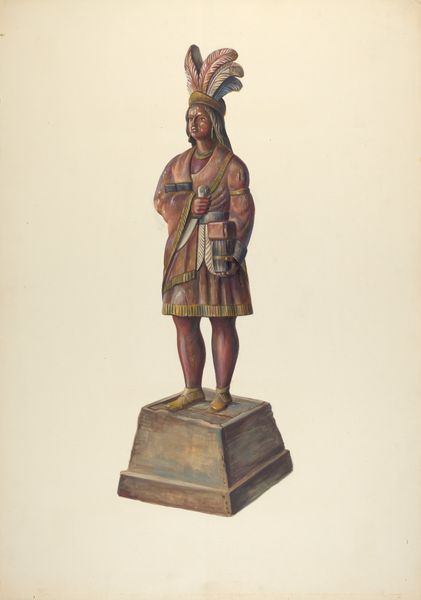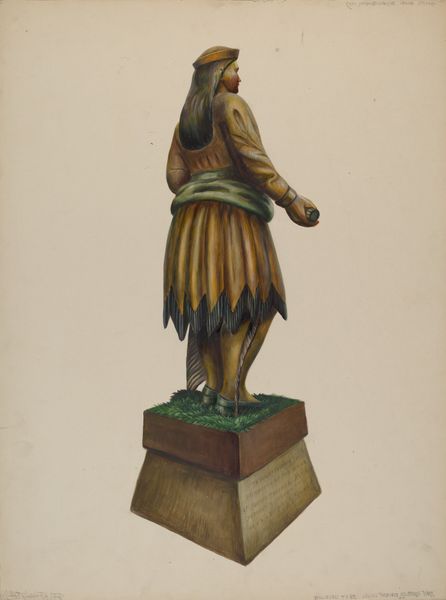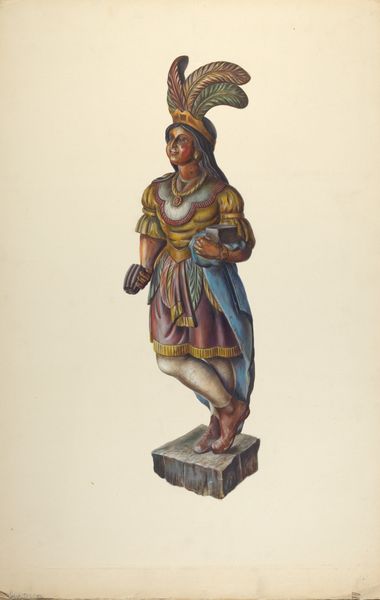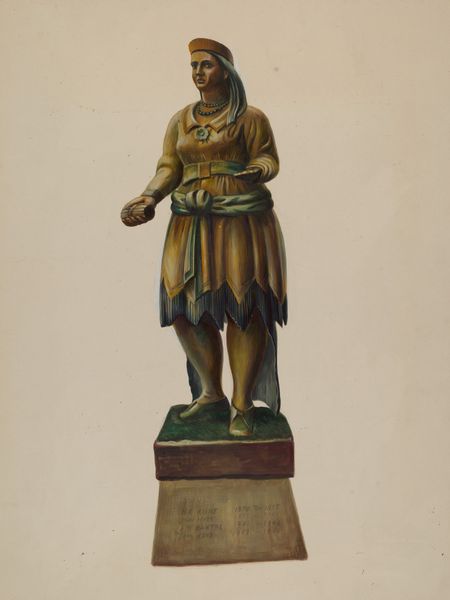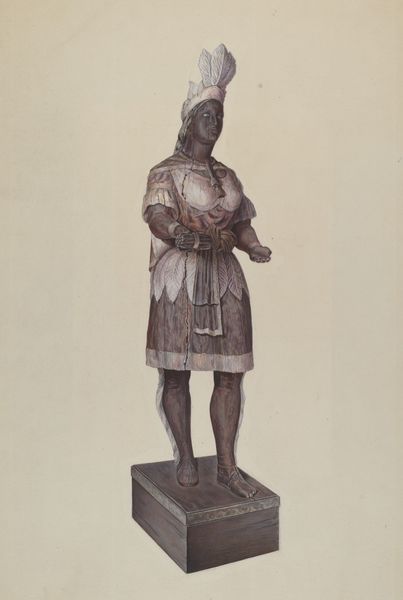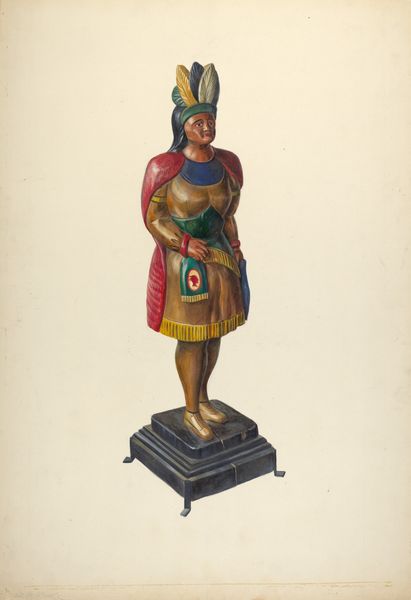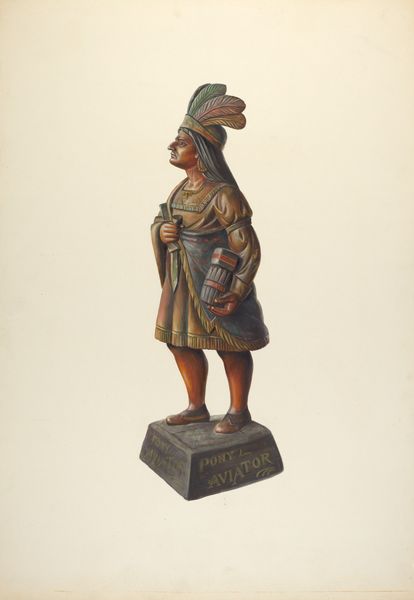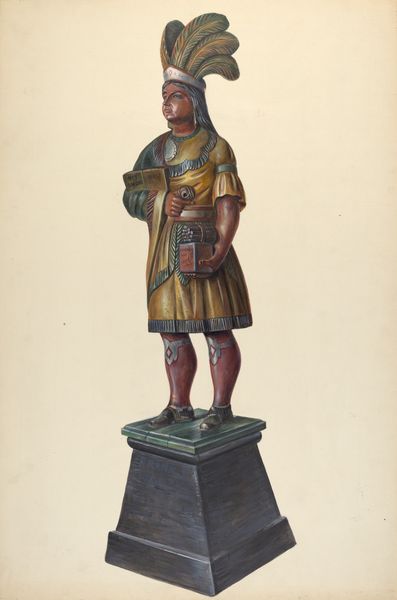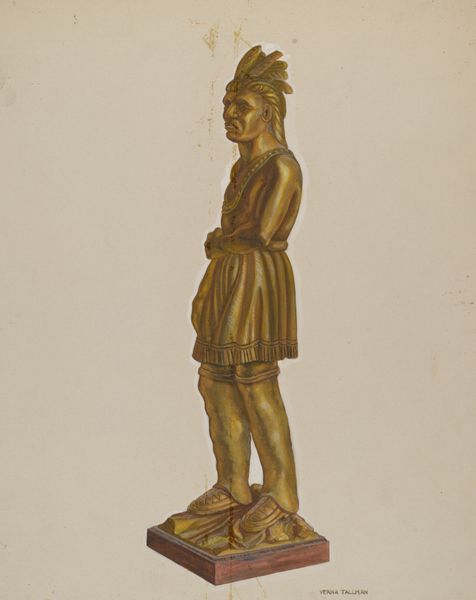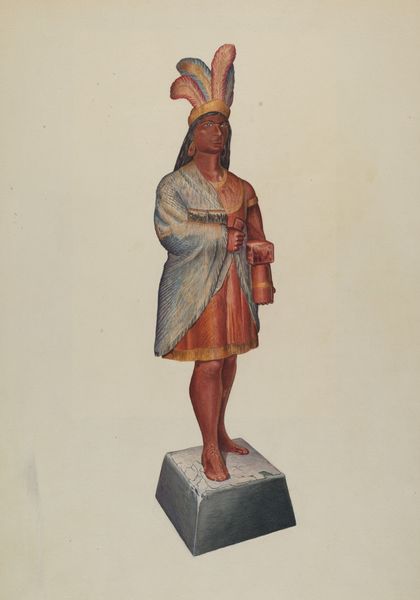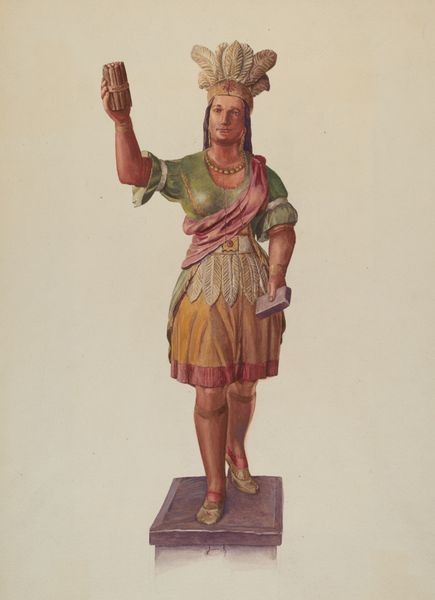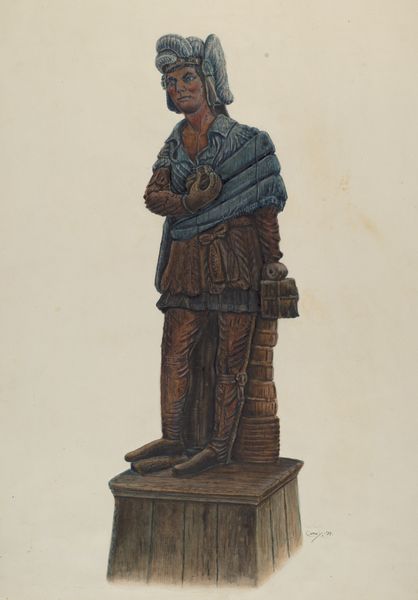
drawing, painting, watercolor
#
portrait
#
drawing
#
painting
#
charcoal drawing
#
figuration
#
oil painting
#
watercolor
#
academic-art
#
regionalism
Dimensions: overall: 61.1 x 45.6 cm (24 1/16 x 17 15/16 in.)
Copyright: National Gallery of Art: CC0 1.0
Curator: Well, look at this curious figure, would you? Immediately brings a certain energy to the room, doesn't it? Editor: Energy, yes, a hesitant, slightly apologetic energy. He seems…self-conscious. Like he's been asked to model but isn't quite sure he's doing it right. Curator: What a great reading! The piece we are looking at is Raymond Chard's “Cigar Store Indian,” a painting that is speculated to have been completed around the 1940's using watercolor, oil, and charcoal drawing. This subject has its own complex, often contradictory history within the visual culture of the United States. Editor: Cigar store indian...The figure itself looks less like a warrior and more like he borrowed his costume from a community theatre production of Spartacus! There's something endearingly awkward about him. And it is certainly an oil and charcoal paint- job of a watercolor, how do we put that, an amalgamation, right? Curator: These figures historically functioned as commercial symbols, often placed outside tobacco shops to attract customers. They speak to the romanticized, often inaccurate, representation of Indigenous peoples in American popular culture. The very materials and construction—the artist clearly blended mediums here—underscore that this is about creating a visual impression rather than capturing some inherent truth. Editor: True! What I find interesting is the hand extended, presenting what I assume is meant to be cigars. The face holds an innocence, and perhaps that awkward energy stems from knowing he's a symbol in a narrative not of his own making. Curator: Precisely, and it highlights the complexities of representation, how art both reflects and perpetuates societal attitudes. I'm also fascinated by the echoes of academic art combined with regionalism, two movements in American art during that period that had vastly different approaches. Editor: He feels like a character study, not necessarily a portrait in the traditional sense but still really, really charming. A silent but complex cultural artifact from a conflicted time, just frozen in pigment and charcoal dust. Curator: It encapsulates how visual culture mediates historical narratives and ongoing dialogues. Editor: And I leave wanting to see that amateur production of Spartacus he clearly auditioned for.
Comments
No comments
Be the first to comment and join the conversation on the ultimate creative platform.
